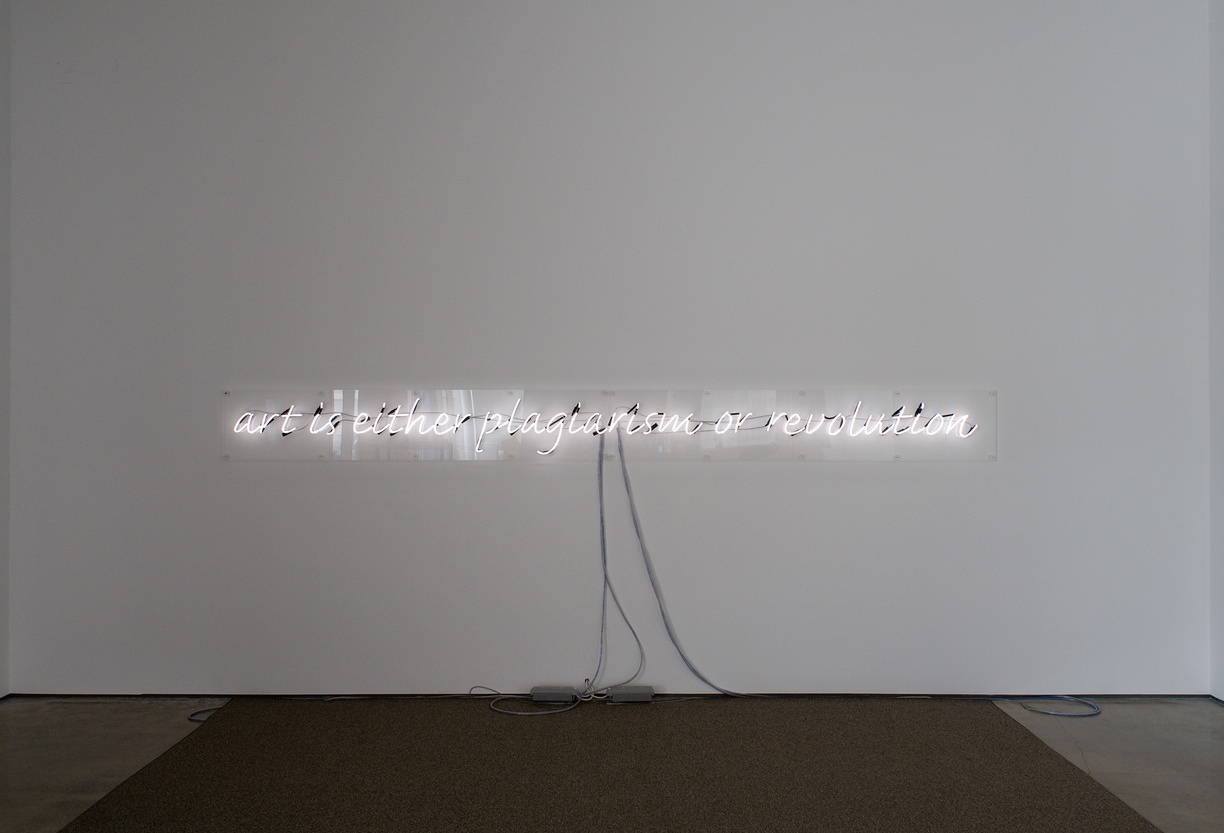
I’VE GOT SOMETHING IN MY EYE
Liesbeth Bik and Jos van der Pol have worked collectively since 1995 as Bik Van der Pol.The circulation of knowledge and re-use of existing and left-over spaces, forms and situations are important strategic tools in their work. Much of their work may also be described as context-sensitive and constructively critical: that is, they examine a particular context and question the functions of art, including those of art institutions. For this project, Bik Van der Pol bring together works from the Marieluise Hessel Collection, selections from the collection of the Van Abbemuseum in Eindhoven, their own works, and ephemera from the CCS Bard archive. Following Henri Bergson’s idea that perception is a function of time, the artists have allowed themselves to look at how works potentially are surrounded by different sources of knowledge and how they sometimes grow from and are feed back into these connections. Objects, once acquired for specific reasons, are in a constant flux of changing meaning, both in the context and dynamics of a collection (which means continuously in the company other concepts and perceptions), as well as in time. Bik Van der Pol describe the project as a process of ‘uploading with circumstantial evidence’, a method that proposes a new circle of communication between different types of ‘reflections’, based on premises of ambiguity. In other words: adding to the flux of changing meaning.
BIK VAN DER POL
Working collectively, Bik Van der Pol explore the potential of art to produce and transmit knowledge and research methods of how to activate situations in order to create a platform for various kinds of communicative activities. Their work engages with revitalization of memory in the present and with questions of knowledge and history, thus creating the necessary potential for a dialogue and an ever-reforming discourse through which they develop an understanding of situations that surround us. The circulation of knowledge and reuse of existing and leftover spaces, forms, and situations are important strategic tools in their work. Critically and constructively, they address “normal” situations not by adding yet another new idea to the cycle of production and consumption, but by revising and reactivating an existing situation. Notions of detachment, such as displacement, reconstruction, and copying, allow something to outgrow its original roots, boundaries or limitations, and can be mobilized as instruments to enclose a collection or intellectual domain to critically explore its potential. Their work aims to improve situations, add what is missing, highlight what is in the dark and to open rather than close. Bik Van der Pol often set up situations where people can meet to exchange thoughts and ideas. Much of their work may also be described as context-sensitive and constructively critical; that is, they examine a particular context and question the functions of art, including those of art institutions.
With, for example, The Bookshop Piece (1996) and Proposition for Reclaiming a Space (1997) Bik Van der Pol re-introduced the discourse on and the practice of art into the very same arena where art is shown. As one of the initiators of the group “Nomads & Residents” they created a platform for presentations by artists, critics, curators, architects, and others (www.nomadsresidents.org). Married by Powers (2002, TENT., Rotterdam) is an exhibition project researching the significance of an international art collection. On the invitation of Frac Nord-Pas de Calais (Dunkerque) Bik Van der Pol started from the premise that a collection only comes alive when taken into operation; when the objects are being shown and allowed to function as ‘working papers’ at large. Married by Powers enlightens aspects of ‘the collection’ (transport, storage, presentation, documentation, mediation, public, personal interpretation) and attempts to create transparency by bringing the collection ‘into action’ as material, as a discussion piece.
Their recent project for the Van Abbemuseum in Eindhoven, Plug In #28 Pay Attention, reflects upon the museum as a place where information or knowledge is collected, kept and made accessible. An important finding from this project is that the availability or lack of information has a significant influence on our ideas of past, present and future. What information is kept in the museum? What information is made accessible? How does the visitor deal with it? These questions are further elucidated using both their own work and those in the Van Abbemuseum’s collection.
Furthermore, their work has been shown widely, for instance in Associates, London; Art In General, New York; Kunsthaus Graz, Modelle fur Morgen, European Kunsthalle; Trans(cient) City, Luxemburg; Differentiated Neighborhoods, Belgrade (2007), INSA Art Space, Seoul; Fly Me To The Moon, a project for the New Rijksmuseum, Amsterdam; Periferic 7, Strategies of Learning, Biennale Iasi, Rumania (2006); Secession, Vienna; Witte de With, Rotterdam (2005).
INCLUDED ARTISTS
I’ve Got Something in My Eye includes works by Bik Van der Pol; and, from the Marieluise Hessel Collection: Vito Acconci, Carl Andre, Giovanni Anselmo, Janine Antoni, Joseph Beuys, Alighiero e Boetti, Shu Lea Cheang, Martin Creed, Valie Export, Peter Fischli and David Weiss, Dan Flavin, Günther Förg, Tom Friedman, Felix Gonzalez-Torres, Mona Hatoum, Zhang Huan, On Kawara, Joseph Kosuth, Glenn Ligon, Robert Longo, Sarah Lucas, Loretta Lux, Paul McCarthy, Bruce Nauman, Gabriel Orozco, Martha Rosler, Robert Ryman, Thomas Schütte, Richard Serra, Kiki Smith, Thomas Struth, William Wegman, and Lawrence Weiner; and, from the Van Abbemuseum, Eindhoven: Johanna Billing, Andre Cadere, Douglas Gordon, Nedko Solakov, and Artur Zmijewski. .
CCS Bard exhibitions are made possible with support from the Audrey and Sydney Irmas Charitable Foundation, and the Patrons, Supporters, and Friends of the Center for Curatorial Studies. Additional support for I’ve Got Something in My Eye provided by the Mondriaan Foundation, Amsterdam. Special thanks to the Robert Mapplethorpe Foundation.













